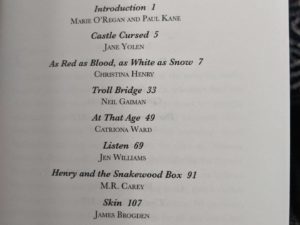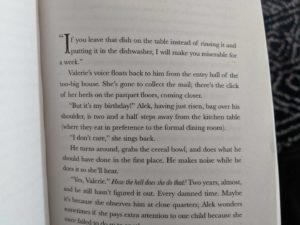Angela Slatter's Blog, page 18
March 27, 2020
The Heart is Mirror, etc
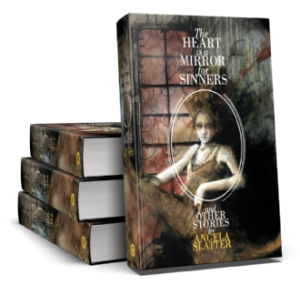 Lovely to see that my new collection, The Heart is a Mirror for Sinners and Other Stories is getting some good press around the place!
Lovely to see that my new collection, The Heart is a Mirror for Sinners and Other Stories is getting some good press around the place!
Paula Guran has reviewed it for Locus: “Angela Slatter’s writing is elegant, eloquent, evocative, and exquisitely disturbing”, and Eugen Bacon reviewed it for Aurealis: “There’s beguiling and peril in each stroke of Angela Slatter’s pen, you never know where it will craft you. Each hand-carved spell is as hooking as it is deadly, her stories are not ones to leave alone.”
You can pre-order here and the non-signed versions are already ready. Thanks to the wonderful PS Publishing for giving it form.
March 23, 2020
The Invention of Ghosts: Gwendolyn Kiste
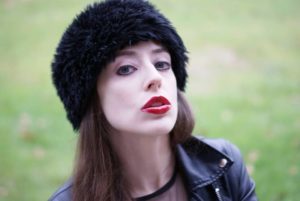 1. What do new readers need to know about Gwendolyn Kiste?
1. What do new readers need to know about Gwendolyn Kiste?
I’m a horror author based in Pennsylvania, and I write stories about body horror, female friendships, coming of age, and hauntings, among other creepy themes. I’ve written a number of short stories as well as four books: And Her Smile Will Untether the Universe, Pretty Marys All in a Row, The Invention of Ghosts, and The Rust Maidens, my debut novel which won both the Bram Stoker Award and the This is Horror award last year. I also love witches and birds, so many of my tales incorporate those in some way too.
2. What was the inspiration for The Invention of Ghosts? 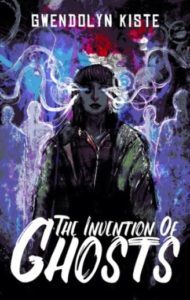
This story deals a lot with the occult, which is such a fascinating topic for me. Human beings have always been curious about what happens after death, and that’s led to so many strange and wonderful books on the subject along with some really unusual but intriguing practices like spirit photography, spirit boards, the bending of spoons, and the creation of ectoplasm. You could spend an entire lifetime researching all the ways we’ve tried to speak to the other side or divine the future or even just swindle others into thinking we know what we’re talking about, and you would still only be scratching the surface. There’s a real rabbit hole of research with all of this.
Last year, when I set out to work on a new novelette, I decided to take all these occult practices, many of which were popularized in the Victorian era, and use them in a modern story about a friendship in crisis. How would two girls from the twenty-first century look at the occult and its history, and what would happen if it turned out they had more control over magic than they even realized? Where would that lead them? It was so much fun exploring those questions with the two characters in The Invention of Ghosts. I definitely became attached to them as they were exploring the same strange things I’ve spent years researching myself.
3. Can you remember the first thing you read that made you decide you wanted to be a writer?
The first book I ever read was The Spooky Old Tree, which was part of the Berenstain Bears series. I absolutely loved the book so much, and I was the kind of kid who was like “I want to try that!” anytime I discovered something new in the world, so it wasn’t too long after I learned to read and write that I was putting together little handmade picture books. I was never much of a visual artist, but I did find that I really liked creating stories. I was always inventing stories in my head anyhow, so it seemed so neat that I could write them down for other people to read.
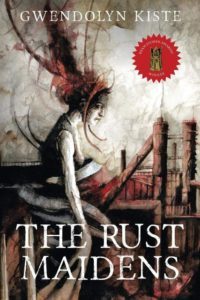 4. What was the Inspiration for The Rust Maidens?
4. What was the Inspiration for The Rust Maidens?
I grew up in the Rust Belt in Ohio, and the landscapes from The Rust Maidens were always with me. Abandoned factories and neighborhoods in decay were—and still are—everywhere in the Midwest. I’d been wanting to use that kind of setting in my work for a while, but I couldn’t figure out the right concept for it. Then I wrote a couple new stories, one of which followed a young girl’s monstrous transformation (“Reasons I Hate My Big Sister”) and another that was a ghost story with a 1980 Cleveland setting (“Songs to Help You Cope When Your Mom Won’t Stop Haunting You and Your Friends”). Putting those two concepts together gave me the first kernel of using body horror and transformation in a Rust Belt setting. Soon after, I started drafting an outline, and it was off to the proverbial races.
5. What is it about horror that draws you in as a writer and reader?
The visceral aspect of horror resonates so much with me. How the genre doesn’t hide; it faces everything head-on and without any kind of protective varnish to it. Being able to stare at the darkness and not flinch away can be so empowering, especially when dealing with traumatic topics in the way that horror often does. Plus, beyond all of that, it can be really fun to read about and create monsters and creepy settings. I’ve loved Halloween and all things spooky ever since I was a kid. It’s such a thrill and an honor to get to foster and explore that love of the strange and unsettling for a living.
6. What was the inspiration for Pretty Marys All in a Row? 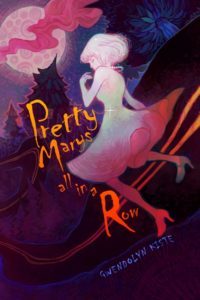
Folklore and urban legends have long been a favorite topic of mine, as well as a favorite topic of my husband’s. We’ve spent many hours discussing folklore and sending each other articles about it and even surprising each other with books we’ve found on the topic. During a car ride one night, we started talking about all the female figures in urban legends and folklore who have the name Mary. Bloody Mary, Resurrection Mary, Mary Mack, Mari Lwyd, Mistress Mary Quite Contrary. As we were talking, I immediately began to imagine all these characters getting bound together by fate or by some sort of curse. A power that brought them together beyond their will, even as they perhaps fought back against it. From there, Pretty Marys All in a Row was born.
7. Which book do you think is an underappreciated gem that everyone should read?
This is such a tough question, because there are so many incredible and underappreciated gems out there! One that definitely comes to mind is Christa Carmen’s Something Borrowed, Something Blood-Soaked. It’s her debut horror collection that came out in 2018 from Unnerving, and the stories are truly magnificent. The book did get a decent bit of press and lots of glowing reviews, but I still think it’s so good that it deserves an even bigger spotlight. Christa is such a talented author, and I can’t wait to see where she takes her writing in the next few years and beyond.
8. And which film should everyone see?
That’s another tough one! I honestly could pick a hundred different films to recommend here, but if forced to choose, I’ll go with Daughters of Darkness, since it’s been on my mind lately. It’s such a strange little vampire film from the 1970s, and it isn’t one that gets discussed too much, so I always love to give it a mention. It’s like a super stylish, Technicolor Carmilla. I also like to give a shoutout to the 1960s occult horror film, Eye of the Devil. If you like The Wicker Man, then you’ll probably enjoy Eye of the Devil, which is very similar and in fact came first. Plus, it’s got a stunning and highly underrated performance from Sharon Tate, who was a far more wonderful actress than she ever got credit for.
9. Which books are you most looking forward to reading this year?
Not All Monsters, an anthology edited by Sara Tantlinger for Rooster Republic Press, is going to be a huge book this year. It’s an all-female anthology that, as the title suggests, focuses on monster stories. The table of contents features an awesome group of authors, including Christa Carmen, Hailey Piper, Joanna Roye, Jennifer Loring, G.G. Silverman, Juliana Spink Mills, and so many more. That anthology will be out in October.
I was also fortunate enough to receive an ARC of Stephen Graham Jones’ The Only Good Indians, so I’m reading that right now. I’m only a chapter in, and it’s already easy to see why it’s gotten so much positive buzz. It’s poised to be one of the biggest horror books this year.
10. What’s next for Gwendolyn Kiste?
I’m finishing up my second novel right now. It’s a fairy tale horror story all about witches and witchfinders, ghost birds and whispering bones. After that, I’ll be off to work on my third novel, which is currently in the outline stage. I don’t want to say too much about that one yet, but I’m really excited about it. And of course, I’ll be writing short fiction too. I’m hoping to have another collection in the next couple years, but I’m still working on putting that together. So many projects, so little time! I feel like that’s every writer’s life!
BIO:
Gwendolyn Kiste is the Bram Stoker Award-winning author of The Rust Maidens, from Trepidatio Publishing; And Her Smile Will Untether the Universe, from JournalStone; the dark fantasy novella, Pretty Marys All in a Row, from Broken Eye Books; and the occult horror novelette, The Invention of Ghosts, from Nightscape Press. Her short fiction and nonfiction have appeared in Nightmare Magazine, Vastarien, Black Static, Daily Science Fiction, Unnerving, Interzone, and LampLight, among others. Originally from Ohio, she now resides on an abandoned horse farm outside of Pittsburgh with her husband, two cats, and not nearly enough ghosts. Find her online at gwendolynkiste.com
After Sundown
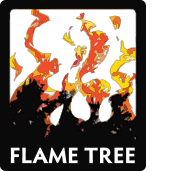 Delighted to have a story in this! Thanks to Mark Morris and Flame Tree Press. Cover reveal in the fullness of time.
Delighted to have a story in this! Thanks to Mark Morris and Flame Tree Press. Cover reveal in the fullness of time.
ToC
RESEARCH by Tim Lebbon
SWANSKIN by Alison Littlewood
THAT’S THE SPIRIT by Sarah Lotz
GAVE by Michael Bailey
WHEREVER YOU LOOK by Ramsey Campbell
SAME TIME NEXT YEAR by Angela Slatter
MINE SEVEN by Elana Gomel
IT DOESN’T FEEL RIGHT by Michael Marshall Smith
CREEPING IVY by Laura Purcell
LAST RITES FOR THE FOURTH WORLD by Rick Cross
WE ALL COME HOME by Simon Bestwick
THE IMPORTANCE OF ORAL HYGIENE by Robert Shearman
BOKEH by Thana Niveau
MURDER BOARD by Grady Hendrix
ALICE’S REBELLION by John Langan
THE MIRROR HOUSE by Jonathan Robbins Leon
THE NAUGHTY STEP by Stephen Volk
A HOTEL IN GERMANY by Catriona Ward
BRANCH LINE by Paul Finch
March 22, 2020
Body Shocks
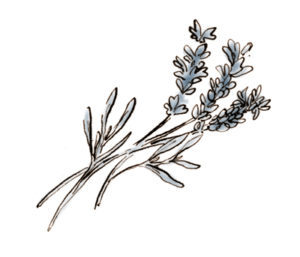
Placeholder art by Kathleen Jennings
Delighted to say that I’ve got a story in Ellen Datlow’s new anthology, Body Shocks, which is out from Tachyon in October 2021 (see, we do have a future).
And this is an excellent ToC (great company and wonderful to see so many Aussies in there)!
The Travellers Stay by Ray Cluley
Toother by Terry Dowling
Painlessness by Kirstyn McDermott
You Go Where It Takes You by Nathan Ballingrud
A Positive by Kaaron Warren
La Beauté sans verte by Genevieve Valentine
Subsumption by Lucy Taylor
Spar by Kij Johnson
It Was the Heat by Pat Cadigan
Atwater by Cody Goodfellow
The Transfer by Edward Bryant
Welcome to Mengele’s by Simon Bestwick
Black Neurology: A Love Story by Richard Kadrey
Cuckoo by Angela Slatter
Cinereous by Livia Llewellyn
The Truth That Lies Under Skin and Meat by Cassandra Khaw
Natural Skin by Alyssa Wong
The Lake by Tananarive Due
I’m Always Here by Richard Christian Matheson
The Look by Christopher Fowler
The Old Women Who Were Skinned by Carmen Maria Machado
Spores by Seanan McGuire
Sweet Subtleties by Lisa L. Hannett
Elegy For a Suicide by Caitlín R. Kiernan
Skin City by Gemma Files
A True Friend by Brian Evenson
What I Found in the Shed by Tom Johnstone
Fabulous Beasts by Priya Sharma
Tissue Ablation and Variant Regeneration: A Case Report by Michael Blumlein
March 20, 2020
The Best of Both Worlds: S.P. Miskowski
 1. What do new readers need to know about S.P. Miskowski?
1. What do new readers need to know about S.P. Miskowski?
The core of my writing is to ask what it means to be human in an indifferent universe. The horror is essential. The humor is intentional. The darkness is always with us. And if I may quote Michelle McNamara, “It’s all chaos. Be kind.”
2. What was the inspiration for your novella The Best of Both Worlds?
The story began as a sub-plot to my short novel, The Worst is Yet to Come, set in the fictional town of Skillute, Washington. As the book progressed I realized the sub-plot, about two adult siblings with disturbing interests, was pulling focus from the main storyline. It was closely related but somewhat different in tone and intention. I cut the sub-plot to make the novel more intense. Later I went back to this idea of siblings—one stalking the living, and one trying to speak to the dead—and created a separate story, The Best of Both Worlds. The action in the novella is concurrent with the novel, and in the second half the two stories converge. It’s best to read the novel first, I think, and then read the novella as a companion piece that adds (I hope) a new dimension to the world of Skillute, which I first created in a novel called Knock Knock.
3. What draws you to horror?
What draws me to the horror genre—as a writer and as a reader—is a need to make sense of the worst things I’ve observed in the world. I know many other people who feel this way. What you’ve been made to witness or experience serves no purpose in your life unless you can share it, somehow. A destructive way to do that is to pass along the violence and cruelty in your relationships with other people. A creative and even possibly useful way to share it is by making stories, confirming what you know, connecting with readers who recognize the horror and find solace in knowing it isn’t just them, it’s the world—and there are plenty of us who choose not to simply lash out in anger and pain.
4. Which books are you looking forward to reading this year?
Anything I can get my hands on by Jess Landry, Kate Jonez, Matthew M. Bartlett, Laird Barron, Victor LaValle or Gwendolyn Kiste. I’m also enjoying fiction by S. L. Edwards and Mike Thorn. But most of 2020 will require non-fiction reading and research for the books and stories I’m writing. The subjects range from skinwalker legends of the Native American southwest to spiritualism in late 19th century British Columbia.
5. What’s next for S.P. Miskowski? 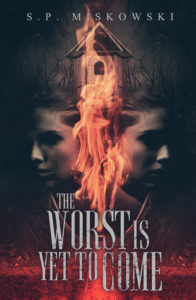
The novel I’m writing now has gone through several incarnations. It started as a series of first person stories in the form of interviews. From there it’s developed into a much more complicated narrative in third person limited and third person omniscient, to convey a tale of broken friendship and petty revenge leading to tragedy. Along the way I touch upon the best and worst of social media, how technology informs and infects our lives, and how its advantages merely serve the nature of the people using it.
Bio: S.P. Miskowski has received two National Endowment for the Arts Fellowships, three Shirley Jackson Award nominations and two Bram Stoker Award® nominations. Her second novel, I Wish I Was Like You was named This Is Horror Novel of the Year and received a Charles Dexter Award (Favorite Novel of 2017) from Strange Aeons. Her books are available from Omnium Gatherum Media and JournalStone/ Trepidatio. Her stories have appeared in Supernatural Tales, Black Static, Identity Theory, Strange Aeons and Eyedolon Magazine, and in numerous anthologies including The Best Horror of the Year Volume Ten, Haunted Nights, The Madness of Dr. Caligari and Darker Companions: Celebrating 50 Years of Ramsey Campbell. https://spmiskowski.wordpress.com/
March 19, 2020
The Wailing Woman: Maria Lewis
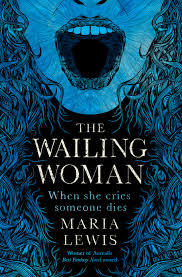
What do new readers need to know about Maria Lewis?
She’s beauty. She’s grace. She’ll punch you in the face.
What inspired The Wailing Woman and how does it fit into your Who’s Afraid universe?
Stan Lee, Marvel Comics maestro, had this saying that you had to treat every comic book like it was someone’s first comic book and I’ve really tried to adopt that strategy in my fantasy series. Yes, there are characters that cross over and the world structure is the same, but each book is designed to be something that new readers can jump into without having read any of the others while there’s also treats for the dedicated reader who has been there from day one. With The Wailing Woman, I had always wanted to take a crack at banshees in terms of supernatural creature, as there really aren’t that many pop cultural examples outside of DC Comics and randomly in the later seasons of Teen Wolf. All of my other books had focused on telling the stories of different types of women through the vessel of quite well-known monsters like werewolves, witches, ghosts, mermaids. Banshees were lesser known and presented a challenge because people weren’t as familiar with the traits of that creature and to be fair, neither was I: there was a lot of digging through the Irish Folklore Commission and academic journals. The big thing that everyone knows about banshees is their wail, so having the central journey of the book be about a woman finding her voice and learning how to use it fit rather beautifully.
What’s the best book/film you read/watched so far this year?
My three favourite films this year are: Birds Of Prey: And The Emancipation Of One Fantabulous Harley Quinn, The Invisible Man and Queen & Slim. All of those are extremely different from each other but also extremely exceptional: I’d be very surprised if that’s not still my ranking for best three films of 2020 by the end of the year. As for books, again, we’re swinging wildly here but I’m a big Thomas Harris fan – he would be one of my favourite authors – and I thought Cari Mora was wonderful. I was really hungry for a new story from him and it was very different from the Hannibal books and even Black Sunday, but super thrilling and detailed. When I got to the conclusion, I cried out because I didn’t expect it to end so soon as I was just tearing through it. I’ve also deeply enjoyed Alexa Martin’s Playbook Series, which is a collection of romance novels set within in and around the NFL (she’s got an incredible voice and perspective). Plus my favourite author, Shea Serrano, put out his non-fiction film book Movies (And Other Things) which I’m extremely jazzy about.
Your began your life as a journalist covering the crime beat on the Gold Coast – do you dip into any of that experience when you write?

Always, although usually in ways that wouldn’t obviously occur to the reader. Because I come from a background as a journalist, I tend to rely heavily on primary sources so when putting a book together research is an essential part of my process. Once I know the basic plot and shape of the novel, I can assess where my knowledge holes are and start setting up interviews with experts who work in those fields or represent specific elements so I can best depict them in the book. For instance with The Wailing Woman, there are several scenes that take place in a supernatural strip club so I interviewed several types of performers who have worked in that field for decades as well as nerdlesque performers to help craft a fictional act for a character. Sadie Burke and several characters in the book all communicate through Auslan – Australian Sign Language – so there was a lot of research there too as well, including learning as much as Auslan as I could so I could best describe it in prose in the novel and speaking with ASL users – American Sign Language – to better understand the intricacies between the different types of communication.
What’s next for Maria Lewis?
A nap. Maybe botox. I’m working through some options at the moment.
March 15, 2020
Lisette of the Raven, Ash of the Rook: Suzanne J. Willis
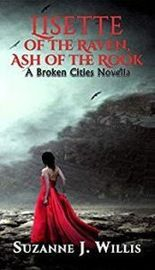 1. What do new readers need to know about Suzanne J. Willis?
1. What do new readers need to know about Suzanne J. Willis?
I’m a lawyer who works with the dead (in wills and estates), and loves stories that are linguistically rich, a bit dark, and occasionally nasty. My tales are firmly in the fairy tale and fantasy realm, with witches, ghosts, and all manner of fae creatures. You will occasionally find forays into post-apocalyptic worlds, and also back to the 1920s or either of the World Wars. I have had over 30 short stories published in various print and online markets, and my debut novella was released by Falstaff Books in 2019.
2. What was the inspiration for your novella Lisette of the Raven, Ash of the Rook?
Lisette’s companion in adventure, the charcoal burner Gem, was inspired by A.A. Milne’s poem, The Charcoal Burner. It is a beautiful, slightly unsettling poem that I have loved for years. Lisette herself is one of my favourite characters – she became totally deaf as a child and her destiny changed drastically as a result. I lost my hearing in my right ear over a period of ten years or so (which, due to the amazing things that surgeons can do, has recently been completely restored), and I really wanted to write an adventure story in which the heroine is brave and bold and not wishing to be “fixed” or “cured” of her deafness. I’m quite passionate about seeing characters with “disabilities” being presented in the same types of stories as fully-abled characters. I also wanted to share some of the silent world with readers.
3. What else can we expect from your Broken Cities stories?
The lovely folks at Falstaff Books are publishing my second Broken Cities novella this year, The Scarab Children of Montague. Montague is a city that sits within the labyrinth, a city made entirely of doors that lead to all different lands, and parts of the labyrinth itself. There is an evil Queen, lost children on a quest and other children who have slowly been turned into an army of giant scarab warriors. Ultimately, it is a fairy tale about love, and loss, and the courage to carve your own path, even when the world is pulling you in an entirely different direction.
4. Which books are you looking forward to reading this year?
Oooh, so much in the TBR pile! Sitting on top are This is How You Lose the Time War, by Amal El-Mohtar and Max Gladstone, and The True Queen, by Zen Cho. Plus The Sky Atlas, by Edward Brooke-Hitching, for pure daydreaming pleasure. And once I’ve caught up on all the goodies from 2019, I can start on 2020!!
5. What’s next for Suzanne J. Willis?
I have a story forthcoming in Gallery of Curiosities, which is a reimagining of Little Red Riding Hood set in an alternate 1920s world. And another one, my first RPG tie-in fiction in an anthology by Green Ronin Publishing, set in the universe of the Blue Rose RPG.
I’m currently working on a novella (no publisher, as yet), set in London during the Blitz, about a young woman who searches for (and finds) the Erl-King, and discovers her family’s long connection with him and his realm.
Finally, there is an upcoming secret-squirrels project which is different to anything that I’ve worked on before, and about which I am immensely excited. So, stay tuned for the inevitable squeeing when I can announce it!
BIO:
Suzanne is a Melbourne, Australia-based writer, a graduate of Clarion South and an Aurealis Awards finalist. Her stories have appeared in anthologies by PS Publishing, Prime Books and Falstaff Books, and in Metaphorosis, Mythic Delirium, and Lackington’s, among others. Suzanne’s tales are inspired by fairytales, ghost stories and all things strange, and she can be found online at suzannejwillis.webs.com
March 3, 2020
Alan Baxter: The Roo
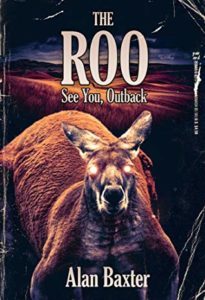 So, as part of trying to be kinder to my poor neglected blog I’m re-starting the interview series.
So, as part of trying to be kinder to my poor neglected blog I’m re-starting the interview series.
First cab off the rank is the inimitable Alan Baxter, who’s recently released a most excellent horror novella in the tradition of Cujo, Razorback and Rogue. A bit of gruesome fun, it’s fast-paced and essential reading for all potential tourists to Australia.
What do new readers need to know about Alan Baxter?
I’m a writer of horror and dark fantasy, and my writing was recently described as a “Clive Barker and Neil Gaiman cocktail, with a shot of Jack Ketchum thrown in”, and apart from being completely flattered by such a stellar comparison, I will now always use it when people ask what my writing is like! I have a back catalogue of several novels (standalone and series) and more than 80 short stories, the best of which are collected into, so far, two collections.
What inspired The Roo?
Quite frankly, absolute insanity.
It began with a bizarre situation that unfolded on Twitter. There was a news article going around with the headline: ‘Australian Town Terrorised By Muscular Kangaroo Attacking People And Eating Gardens’. A more Australian story is hard to find. Then author Charles R Rutledge tweeted that it sounded “like something Zebra Books would have published back in the day”. So Kealan Patrick Burke (superb author and excellent cover designer) mocked up a brilliant old school horror novel cover in response. Several of us started joking about how a cover that cool really should be on an actual book. One thing led to another, and as I was the Aussie in the conversation, people started saying I should be the one to write it. I’d been planning to write an outback horror story addressing themes of domestic violence, with a supernatural monster at the core of the yarn, but I hadn’t quite cooked that idea yet. So I decided I could use this story, which in my mind was a novella. I thought it would be a really fun creature feature. But surely, the whole concept was just nonsense. A bit of a joke. Then people kept hassling me to write it. I even got a few private messages along the lines of, “Dude, please, you have to do this!” Terrible enablers, all of them. They were actually fucking serious. So I wrote it.
Can you remember the first thing you read that made you think you wanted to become a storyteller?
I had a handful of books that I read over and over as a kid – things like Charlotte’s Web, Stig of the Dump, Danny the Champion of the World, stuff like that – and I always wondered if I could ever create something that got so deeply into other people as those books got into me. I think my love of storytelling started back then. As I got older and started reading Barker, King, Dahls’ short fiction for adults, and so on, I decided I would try it too. I didn’t take writing seriously as a career until my late 20s though. But I think I’ve always had a storyteller’s heart, I used to make stuff up all the time.
Which books are you looking forward to reading in 2020?
Oh, there’s a bunch on my radar, actually. I’m really excited about the new Stephen Graham Jones book, The Only Good Indians. I absolutely love his stuff and can’t wait for that. I want to read the new Sarah Pinborough too, Dead To Her. I haven’t got to that one yet. The new Coleridge book by Laird Barron as well, but I’m not sure when that’s out. Corey J White has a book called Repo Virtual coming soon and I think that looks great. Argh, there’s so much good stuff!
What’s next for Alan Baxter?
Well, any day now there should be an announcement about a new novella coming sometime in the middle of the year. I had a novella out in 2018 called Manifest Recall that was really well received. People kept telling me they wanted more of Eli Carver’s story. Well, watch out for an announcement soon.
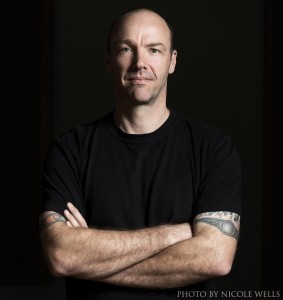 Alan Baxter is a British-Australian author who writes horror, supernatural thrillers, and dark fantasy, liberally mixed with crime and noir. He rides a motorcycle and loves his dog. He also teaches Kung Fu. He lives among dairy paddocks on the beautiful south coast of NSW, Australia, with his wife, son, dog, and a lizard. Read extracts from his novels, a novella, and short stories at his website – www.warriorscribe.com – or find him on Twitter @AlanBaxter and Facebook, and feel free to tell him what you think. About anything.
Alan Baxter is a British-Australian author who writes horror, supernatural thrillers, and dark fantasy, liberally mixed with crime and noir. He rides a motorcycle and loves his dog. He also teaches Kung Fu. He lives among dairy paddocks on the beautiful south coast of NSW, Australia, with his wife, son, dog, and a lizard. Read extracts from his novels, a novella, and short stories at his website – www.warriorscribe.com – or find him on Twitter @AlanBaxter and Facebook, and feel free to tell him what you think. About anything.
Chatting with Lian Hearn
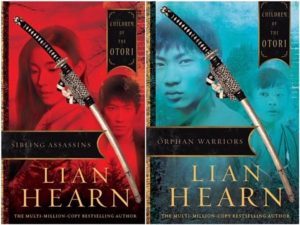 Last night I had the absolute pleasure of chatting with Lian Hearn at Brisbane Square Library. We talked about the writing life, process, and her last two novels, the Children of the Otori series, Orphan Warriors and Sibling Assassins.
Last night I had the absolute pleasure of chatting with Lian Hearn at Brisbane Square Library. We talked about the writing life, process, and her last two novels, the Children of the Otori series, Orphan Warriors and Sibling Assassins.
And, due to the magic of technology, the whole thing was livestreamed and recorded, so you can listen to Lian being delightful and erudite and watch me making dorky faces and horribly paraphrasing quotes (because I am why we cannot have nice things).
Go here. Or rather, please go here, it’s not an order or a demand. You can go here if you so choose.
February 24, 2020
Cursed!
 This lovely thing arrived in the mail the other day not long after I saw this review of it at Publishers Weekly. All in all, a good day.
This lovely thing arrived in the mail the other day not long after I saw this review of it at Publishers Weekly. All in all, a good day.
Thanks to Marie O’Regan and Paul Kane for taking my story.
Cursed is out on 3 March, 2020.
